Alexander I, was the head of the Russian state when it was invaded by Napoleon. His patient leadership during the invasion and Alexander’s change from leading the army himself to relying on his more experienced generals was key to winning the war. Since I recently blogged on Alexander, instead of rehashing his life, you can read about it here.
Archive | December, 2012
Alexander I – #9 On The Best Russian Ruler list
Elizabeth I’s Birthday
Elizabeth Petrovna (Episodes 40 and 41) was born on December 29, 1708 as the daughter of Peter the Great and Catherine I. Her reign, from December 6, 1741 to January 5, 1762 was marked with enormous expenditures of money on the arts and architecture. She was one of the most popular monarchs in Russia’s history in part because of her outlawing execution.
Her father, Peter I, was a towering figure. His legacy would cast a huge shadow on the people of Russia for centuries to come. To be the daughter of a legend must have been hard but Elizabeth was up to the challenge. She was betrothed to Prince Karl Augustus of Holstein-Gottorp, son of Christian Augustus, Prince of Eutin but he died a few days after the betrothral. She was never to marry and would have no children to succeed her.
After her father died, her mother Catherine took over but her reign was brief, lasting only two years. After her death, her cousin, Peter II who was the son of Peter the Great’s brother Alexis assumed the throne. He lasted less than three years and with his death, Peter the Great’s niece, Anna Ioannovna took over as Empress of Russia from 1730 to 1740. Shortly before she died, she named her grandnephew Ivan VI as heir but the boy was a mere one-year old. His mother, Anna Leopoldovna became regent but she was widely disliked because of her German advisers. Within two months he was overthrown by Elizabeth and her allies and locked away never to be heard of again. When guards tried to free him, he was murdered at the order of Catherine the Great.
Assuming the throne as Empress on December 6, 1741, Elizabeth was to reign for twenty years. She was head of Russia during a trying time with the Seven Years War raging throughout Europe. Elizabeth and her policies were to have an enormous influence on the outcome of the war. Her domestic policies were solid as they continued with the ideas of Westernization started by her father.
She knew that without a child, a succession issue would arise so Elizabeth selected her nephew, son of her sister Anna, Peter of Holstein-Gottorp as the next in line. Next up was a wife for him and after much debate she picked Princess Sophie of Anhalt-Zerbst who was christened Catherine when she converted to Orthodoxy.
When Catherine gave birth to a son Paul, he was snatched from his mother and raised by Elizabeth. This cause a great deal of emotional distancing to take place between mother and son. After Elizabeth died in 1762, Peter III was crowned Tsar but his reign would only last for six months before he was overthrown and killed by a coup that elevated his wife Catherine the Great to the throne.
Elizabeth’s legacy is positive although unremarkable. While she cannot be rated as one of the best Russian rulers of all time, she certainly does not come close to being one of the worst.
Gorbachev – #9 On the Worst List
Mikhail Sergeyevich Gorbachev is considered by many in the West as being one of the most enlightened Soviet or Russian rulers of all time. In Russia on the other hand, he ranks at or near the bottom and for good reason. Despite the Nobel Peace Prize and the West’s glee at the end of communist rule in the USSR, his domestic policies were an unmitigated disaster for the people he was supposed to protect.
Born in Gorbachev was born in Stavropol Krai in Russia into a peasant Ukrainian–Russian family on March 2, 1931. His beginnings were humble and the work hard but young Gorbachev made do. He was considered quite a bright young man but schooling would have to take a back seat in 1941 when the Soviet Union was invaded by Adolph Hitler’s Nazi forces. While he claims in his memoirs that the Nazi’s planned to kill everyone in his village, he never was at risk for death in his lifetime until possibly the attempted coup in 1991.
When he took over as head of the Soviet state in 1985 as General Secretary of the Communist Party of the Soviet Union, he was handed a totally corrupt and rotting system. Despite that, he was very naive in how he handled the domestic issues with no clear cut plan on how to overcome the issues. At first he believed that simply by replacing and moving old time Brezhnev cronies and replacing them with younger and supposedly more idealist communists that things would rebound. Instead, things kept getting worse by the day.
Seeing this happening, Gorbachev decided on radical reform without truly thinking things out. Perestroika and Glasnost were his two guiding ideologies but they were only vague ideas that meant little economically to the people of the Soviet Union. When the country began to dissolve, his policies did little to reverse the suffering of the people as food and consumer good shortages were rampant. When the country finally was disbanded, hunger and misery were widespread throughout Russia.
When I initially began my research into Gorbachev, I was wearing rose-colored glasses as the media and the U.S. government painted a pretty picture of the man. As I delved further into his life and times, it became more and more apparent that his reign as head of the Soviet state puts him on the list of worst rulers of Russian or Soviet history.
Khrushchev #10 – Best Russian Ruler List
Nikita Sergeyevich Khrushchev is in my opinion, #10 on the list of best Russian rulers. Many might disagree but he did some impressive things in his time following the terror that was the rule of Joseph Stalin. Khrushchev was in a tough position when he came to power and he tried as much as possible to reform a corrupt and broken system. While he ultimately failed, the fact that he tried as hard as he did was good enough in my humble opinion to make the good ruler list.
Born on April 15, 1894 to a peasant family, this unlikely man rose to the pinnacle of power in the Soviet Union in 1953. Khrushchev survived the Great Purges of the late 1930’s, the Great Patriotic War (World War II) and the intrigues following Stalin’s death to make the grab for power. While many condemn him for participating in Stalin’s purges, it was either that or face his own demise. He did what he had to to survive. But when he had the opportunity to expose the murderous era he did so with great bravery and put himself into a great deal of peril as well.
His administration and rule were marked by a lot of highs and lows. One of Khrushchev’s high points is the so-called Secret Speech where he exposes the abuses of Stalin. Of his lows, there is little doubt that the Cuban Missile crises is top of the list. In between, he tried as hard as any Russian or Soviet leader to better the plight of his people. Reading his memoirs and studying his time in office, it is apparent that he truly tried to make the necessary reforms to raise up the standard of living in his country.
While erratic in his behavior, sometimes coming off as a buffoon, he was a man of conviction in a system that was corrupt at its core. Khrushchev stood far above any Soviet leader in my opinion and deserves a spot in the list of best rulers of Russia.
Cheka – Soviet Secret Police Created
The Cheka, “The All-Russian Extraordinary Commission for Combating Counter-Revolution and Sabotage” was founded by decree on December 20, 1917 by Vladimir Lenin. In order to tighten his grip on power and to set the stage for the brutal Russian Civil War, Lenin formed the Cheka to terrorize his opposition. Led originally by Felix Dzerzhinsky, by 1922, tens of thousands of people were arrested, tortured, and or executed by the various Cheka groups.
The organizational structure of the Cheka was created in regions like the oblast, guberniya, raion, uyezd, and volost Chekas. By 1922, there were hundreds of thousands of members of the Cheka, most in the fighting units in the Red Army. Their main targets were anyone associated with the old Tsarist regime, the clergy, anyone with any measurable amount of money or land holdings, and just about anyone who did not back the Bolshevik’s. People were encouraged to spy on their neighbors so anyone with a grudge against you could rat you out to a Cheka official which meant your death warrant was on its way.
Their goal, as Dzerzhinsky wrote in the Red Army journal Krasnaya Gazeta was, “Without mercy, without sparing, we will kill our enemies in scores of hundreds. Let them be thousands, let them drown themselves in their own blood. For the blood of Lenin and Uritsky … let there be floods of blood of the bourgeoisie – more blood, as much as possible…” After the attempted assassination of Lenin by Fanny Kaplan and the successful murder of Moisie Uritsky, both in 1918, the Red Terror was unleashed on the people.
Guided by Lenin’s belief that it was better to arrest 100 innocent people than to let one guilty person free. the Cheka was given a free hand to do whatever they pleased. You can imagine the kind of criminal minds that were allowed to perpetrate gross inhumane crimes against humanity. Into that, you have to understand that the White Army was as guilty of the same depravity as was the Red Army.
By 1922, the Cheka was reorganized and a new secret police agency, the GPU or OGPU was formed which morphed into the NKVD and eventually the KGB. Its legacy remains dark and foreboding, with countless shattered lives strewn in it wake. A sad part of Russia’s history.
Decembrist Revolt
The Decembrist Revolt was undertaken on December 26, 1825 to protest the ascension of Tsar Nicholas I to the throne after the death of his father Alexander I. When Alexander died, it was assumed that Constantine would take the throne so many officers pledged their allegiance to him. Constantine declined the role publicly but some of the officers did not know it or did not believe it. Nicholas I stepped forward but he was terribly unpopular so about 3,000 officers decided to take action.
The Decembrist Revolt was not a single event so much as a reaction to the post-Napoleonic war situation in Russia. For years, few Russians traveled abroad they only knew the system that was authoritarian, with supreme power held by the Tsar. They also knew a world where serfdom was the norm. When Russian troops chased Napoleon all the way to France, they began to notice that their world was an anomoly and that the outside world had a lot more to offer than Russia. The Decembrist movement was born out of this awakening.
The first group to form post Napoleon in 1816 was the Union of Salvation, or of the Faithful and True Sons of the Motherland. They were made up of liberal minded officers of the Imperial Russian Guard. Following a revolt by the Semenovsky Regiment in 1820 it was decided to go underground. Two factions developed, the Northern Society and the Southern Society. The later group was the more radical, led by Pavel Pestel. The Northern Society, based in St. Petersburg, was led by Nikita Muraviev, Prince S. P. Trubetskoy and Prince Eugene Obolensky.
At first, Alexander I thought liberal reform to be necessary but as time went on he felt that Russia was not ready and that a return to conservative authoritarian rule was the way to go. Repression of groups espousing liberal ideas was carried out by the Tsar’s secret police. This caused the officers to become even more radical in response.
Early on December 26th, about 3,000 men assembled in Senate Square to protest the ascension of Nicholas. The Tsar ordered over 9,000 soldiers to surround the officers and pressure them to leave. Insults flew from the rebels side but the Decembrist movement was in dissarray as Prince Trubetskoy, the supposed leader was no where to be found. His cold feet and later Colonel Bulatov’s, the supposed second in command doomed the movement.
Still the men refused to leave whereby an order to fire on them was issued. A cavalry charge was tried first, but because of the icy cobblestones, that was abandoned. Finally, Nicholas ordered the artillery corp to fire on the men creating havoc. As they tried to flee the scene many were killed when they crossed the Neva river which was shelled, causing the ice to break, drowning many of the men.
The Southern Society never got a chance to join the Decembrist movement as their leader, Pavel Pestel had been arrested the day before. While they tried an armed uprising it was suppressed quickly. Arrests were made with five sentenced to hanging and others to exile. When they tried to hang the five men, the ropes broke which would, according to tradition be seen as God’s commuting the death sentence. Nicholas would have none of that and ordered the men to be hung again. This time the rope held and all died. It was to be the last execution ordered by a Russian Tsar.
The Decembrist movement may have failed but it began the rumbling of society that would eventually lead to the Russian Revolution in 1917. Dissatisfaction with the Romanov’s and their rule would grow, especially among the liberal intelligentsia Men like Lenin, Herzin, and Bakhunin were born of the Decembrist movement.
Alexander I of Russia
Tsar Alexander I, also known as Alexander the Blessed was born on December 23, 1777. His rule of Russia from March 24, 1801 following the assassination of his father Paul I, was a tumultuous one. The crowning glory of his reign of course was the defeat of Napoleon Bonaparte during the Napoleonic Wars.
Born to Paul Petrovich Romanov and Maria Feodorovna née Sophie Dorothea, he was raised primarily by his grandmother, Catherine the Great. She had little faith in his father Paul which caused Alexander a great deal of difficulty later in his life. He tried to appease both his grandmother and his father which led to his doing the same when he became Tsar in 1801. Throughout his reign, Alexander tried to make everyone happy but he was also a master manipulator as well.
After the murder of his father Paul in March of 1801, Alexander assumed the mantle of the Russian Empire with a great deal of guilt. Some say he knew that the conspirators led by Counts Peter Ludwig von der Pahlen and Nikita Petrovich Panin were planning the murder, others thought not. It is clear that he knew of the plot to remove his unpopular father from the throne. It is equally clear that they did not tell him of their nefarious plans. Nonetheless, Alexander did take over (Episode 53) for his father at the age of 23 with the admonition “Time to grow up! Go and rule!” by General Nicholas Zubov.
Early on in his reign, Alexander began to try to reform the country especially the government. Led by the liberal Mikhail Speransky reforms were drawn up and ready for action. Some of the reforms came to be, but for the whole, not a lot was done partly due to a problem that was cropping up in Europe; the arrival of Napoleon Bonaparte to the world stage.
It was his battles with Napoleon (Episode 54) that made Alexander I the hero that he became to his people. Starting in 1807 and finishing in 1814, the war against Napoleon had its ups and downs but eventually, Alexander and his Russian army prevailed. After this though, the Tsar’s personality took a conservative and somewhat mystic turn.
In 1825, in the town of Taganrog Alexander supposedly died after a short illness. Rumor though has it that he did not die that he became the monk Feodor Kuzmich. Some in the Romanov family were told that the two men were one and the same and there is actually a book called Imperial Legend: The Mysterious Disappearance of Tsar Alexander I by Troubetzkoy that claims the same thing. Whatever the truth, his brother Nicholas I takes over for him and begins the slide that the Romanov’s never recovered from.
Russian Rulers – The Worst – #10
Starting today, I will be listing the best and the worst Russian Rulers (and Soviet) of all time. Top ten lists often times illicit controversy and argument but that is what I’m looking for. My overall hope is that it makes you think and will further everyone’s enjoyment of Russian history.
My #10 pick for the worst of the Russian Rulers is Sviatopolk the Accursed. Sviatopolk I was sandwiched between two of the better Russian rulers of all time, Vladimir the Great and Yaroslav the Wise. His rule, while not that bad, was marked by the murder of his two brothers, Boris and Gleb. These two were considered among the earliest Russian Orthodox saints.
Sviatopolk’s reign was a relatively short one, from 1015-1019. The people of Kiev did not receive his leadership with any real warmth. His murder of his brothers, the third one being Sviatoslav made him quite disliked. This was why history knows him as Sviatopolk the Accursed.
After the murders of his three brothers, the remaining one, Yaroslav, one of the better future Russian rulers, decided to take action. At the time, Yaroslav, then Prince of Novgorod, defeated his brother near the town of Lubech, near the Dnieper river. Sviatopolk fled to Poland where his father-in-law was based. With his help, Sviatopolk returned to defeat Yaroslav, causing him to flee back to Novgorod.
Back and forth they went, Yaroslav returning to defeat Sviatopolk. When the defeated Grand Prince headed towards the steppe, he recruited one of the early Russian rulers most hated enemy, the Pecheneg peoples. His initial foray was successful but eventually he was soundly defeated and on his way back to Poland, he died at the age of 39.
There is some controversy surrounding Sviatopolk and whether he truly killed his three brothers. Some historians believe it was Yaroslav who ordered the murders. We will never really know but I will go along with the version from the Primary Chronicles and that my choice of Sviatopolk as one of the worst Russian rulers is justified.
Sakharov Released From Exile in Gorky
Soviet dissident Andrei Sakharov was released from exile in the town of Gorky on December 19, 1986 by head of the USSR, Mikhail Gorbachev. He was one of the lead researchers in the Soviet development of nuclear weapons, a program known as the Third Idea. Sakharov was to be one of the leading advocates of improving Soviet human rights in the 60’s through the 1980’s.
Andrei Dmitrievich Sakharov was born on May 21, 1921 in Moscow to an educated couple, Dmitri Ivanovich Sakharov and Yekaterina Alekseyevna. His father was a physics teacher in a private school and later at the Second Moscow State University. Early on one could see that Sakharov was a brilliant student. In 1938, he entered Moscow State University to begin his studies later going to the Lebedev Physical Institute. There he honed his skills in physics where he received his PhD in 1947.
With the Cold War, Stalin pressured his scientists to catch up to the Americans with nuclear bombs of their own. Sakharov moved to the closed city of Sarov near Nizhny Novgorod (then the town of Gorky) to become an important part of the Soviet nuclear program. There he was part of the Third Idea, basically the building of thermonuclear weapons. In the coming years, he would feel little guilt about his part in creating the bombs as he thought that the threat reduced the risk of a third world war.
By the 1960’s, Sakharov began to see that the Soviet and American leaders were moving the world towards confrontation. He was worried about his role in any potential thermonuclear war. He pushed hard for the 1963 Partial Test Ban Treaty, signed in Moscow. It was the concept of anti-ballistic defense that created the true moral dillema that was to face Sakharov. In a letter to the Soviet leadership he wrote that they “take the Americans at their word for a bilateral rejection by the USA and the Soviet Union of the development of antiballistic missile defense.”
He wrote an essay in May of 1968 entitled, “Reflections on Progress, Peaceful Coexistence, and Intellectual Freedom.” It gained international notoriety but the Soviet leadership was not pleased. He was banned from all military work and was by now closely watched by the KGB.
By the early 1970’s both he and author Aleksandr Solzhenitsyn were targeted as dissidents and considered traitors. Constantly harassed he and his new wife, fellow dissident Yelana Bonner refused to back down. He won the Noble Peace Prize in 1975 but was banned by the government to leave the country and accept the award. On January 22, 1980 he was sent into internal exile in Gorky (now back to Nizhny Novgorod) for publicly protesting the war in Afghanistan.
He and his wife went on a number of hunger strikes to protest their treatment and to demand that Yelana be allowed to go to the United States for heart surgery. It was not until December 19, 1986 that Mikhail Gorbachev allowed him to return from exile. Three short years later, on December 14, 1989, Sakharov died of a heart attack at the age of 68. Around the world, there are now a number of awards named in his honor for people who fight for human rights. There is a physics award given by the American Physical Society “to recognize outstanding leadership and/or achievements of scientists in upholding human rights”.
Stalin’s Birthday
Joseph Stalin, iron-fisted ruler of the Soviet Union from 1924 until 1953 was born on December 18, 1878. While some in Russia may celebrate his birthday, I cannot in good conscious do so. He was responsible for the murder of millions of innocent people which is beyond the scope of imagination.
The man originally named Iosif Vissarionovich Dzhugashvili born to Ketevan Geladze and Besarion Jughashvili in Gori, Georgia, would destroy all who opposed him and those who threatened his paranoiac mind. Few men in history carry such a horrific biography but he stands with men like Genghis Khan, Mao Tse Tung and Adolf Hitler.
In his defense, some have claimed that he saved Russia from the Nazi’s through his leadership and forced industrialization but at what cost? He used humans like bullets throwing them at the Nazi’s or into slave labor to industrialize his country. Stalin, despite being warned over and over that the Nazi’s were going to attack the Soviet Union, refused to set up defenses that would have saved the lives of millions of people.
During the Great Purges of 1937-39, Stalin had no qualms about ordering the execution of innocent people for no other reason than they were alive. Anyone who he perceived as being a threat as well as their families, friends and associates were destroyed or sent to inhumane labor camps. The incredible toll it took on his people and those surrounding him were incalculable.
If you’ve been listening to my post-Stalin podcasts you would by now understand how he emasculated the leaders that followed him. The idea of independent thought was squashed, reforms almost impossible to successfully pull off and a system so corrupt that it collapsed in 1991. Khrushchev tried to repudiate things in the 1950’s and early 1960’s but was defeated by Brezhnev and his allies who tried to bring back some of Stalin’s ways to squash open discussions of the problems facing the Soviet Union.
While some may think I’m being harsh in my assessment of Stalin, I can’t justify any other thought process. Spending weeks looking at all the evidence, especially the material that was opened after perestroika, I cannot have an opinion any less than his being, as my mother used to call him, “a beast.”

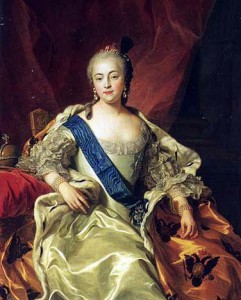
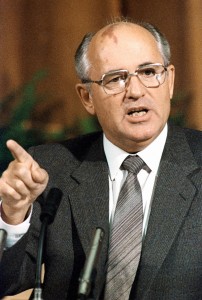
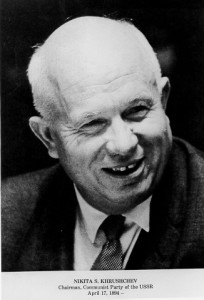
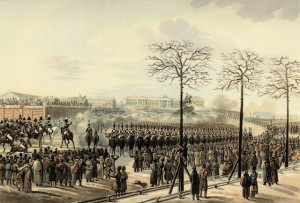
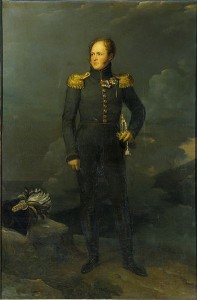
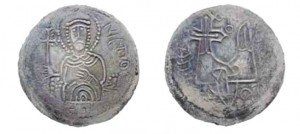
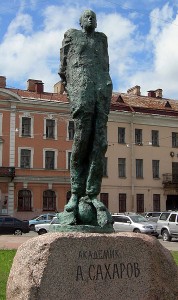

Recent Comments